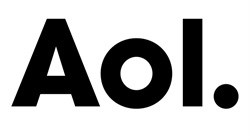
The roller-coaster ride appeared to come to an yesterday when AOL agreed to sell itself to telecom giant Verizon for $4.4 billion, representing an ignominious closing chapter for a company that was once one the world's leading tech stars.
In the early days of the internet, AOL - then known as America Online - signed up more than 26 million US subscribers for dialup internet, and became synonymous with the phrase "You've Got Mail," which also was the name of a popular movie at the time.
It became one of the world's most powerful corporations with a tie-up with Time Warner - one of the largest deals in corporate history valued at some $165 billion in 2001.
"At one point AOL was king of the world on the Internet," said Roger Kay, analyst at Endpoint Technologies Associates. "Now they are basically an also-ran. This is pretty much a fire sale for AOL."
The company began to unravel shortly after the merger which created a conglomerate known as AOL Time Warner.
Customers began to move to high-speed connections from cable firms, and moved beyond the "walled garden" of content on AOL to the much wider universe of the World Wide Web.
With the synergies from AOL and Time Warner failing to materialise, the companies decide to break up in 2009.
"AOL tried to do too much too soon and didn't do anything well enough," said Larry Chiagouris, a Pace University professor of marketing.
Still, AOL was a pioneer for the early days of the online sector. It began in 1985 as Quantum Computer Services and offered an online service named Q-Link, and in 1989 offered its first online messaging application.
In 1991, it was renamed America Online through an employee contest and went public on the Nasdaq the following year.
It offered chat rooms, bulletin boards, email and news and entertainment content for Americans just learning about the Internet, and swallowed up rivals CompuServe and ICQ.
It tried to expand internationally, first as a dial-up service and later as a Web portal, with little success. Its acquisition of the online browser Netscape also produced little.
The merger with Time Warner was touted as a way to bring together the considerable content of Time Warner with the emerging online world but ended up as one of the biggest merger disasters on record.
"It became unmanageable and all the properties began to suffer" Kay said. AOL nonetheless began a series of reorganizations that included both job cuts and acquisitions in an effort to rebuild its business.
In 2005, it became the first online company to win an Emmy award for coverage of the global Live8 concerts. It boosted its content with news sites like the Huffington Post, acquired in 2011, and TechCrunch in 2010, plus other services such as Moviefone and Mapquest.
But the key for Verizon could be its advertising platform which manages online marketing efforts for the Web as well as video and mobile.
"Verizon has the pipes, AOL the ability to monetise streaming video with advertising," said Rebecca Lieb, analyst at Altimeter Group.
"In that respect, the alliance makes a great deal of sense for both players as digital video continues to gain traction and viewers."